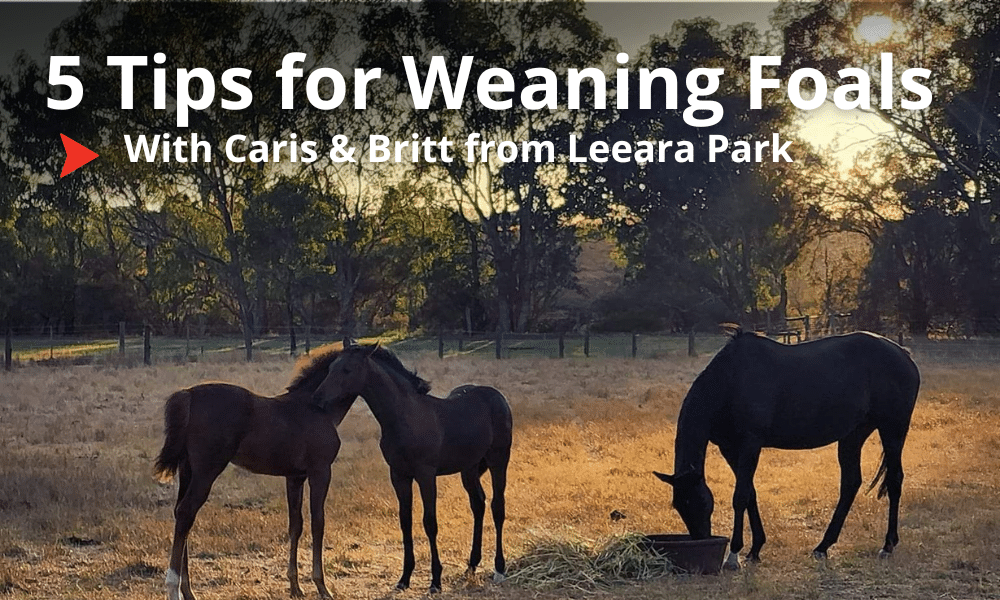
30 Nov 5 Hot Tips for Weaning Foals with Leeara Park
Our team members Caris & Britt have been breeding quality show horses and ponies for many years. In their latest blog post, they give us their 5 hot tips for weaning foals.
1. Build Confident Individuals
Prior to weaning, we always make sure that our foals have had extensive handling while on their mums. They all are halter trained, know how to lead, lift legs, have baths, making them all-round confident individuals.
Their mums often act as they security blanket, meaning when you separate them, they tend to initially lose confidence and can become quite nervous. The more handling we do before weaning, the better we have found our foals to be in handling the change in life style, to become independent little people. This handling starts from day dot, from the time they are born.
We are mindful not to spoil them too much, but they do get lots of scratches and cuddles and they are clear what we expect of them as babies.
2. Out of hearing and eye sight
When we wean, we make sure that we are very organised. We choose to quick wean and separate our foals and mares in the one day. We usually borrow a friends property and take our mares off the property.
We put the foals in a stable to ensure they are safe, put the mares on the float and move them to another property, keeping in mind to get the separation part done quickly. The reason that we move them to another property is because we don’t want them to hear each other calling out or still be in eye sight, as that delays the separation time and adds additional stress.
Our foals stay in a stable for a day or two, and we graduate them back into a paddock as quickly as we can so that its back to normality for them. Some people choose to do a soft wean and gradually move their mares and foals apart. We choose to do it quickly, which works best for us.
We find within a day or two they are settled in their new environments. The foals then become more reliant on humans and begin to create a lovely bond with us.
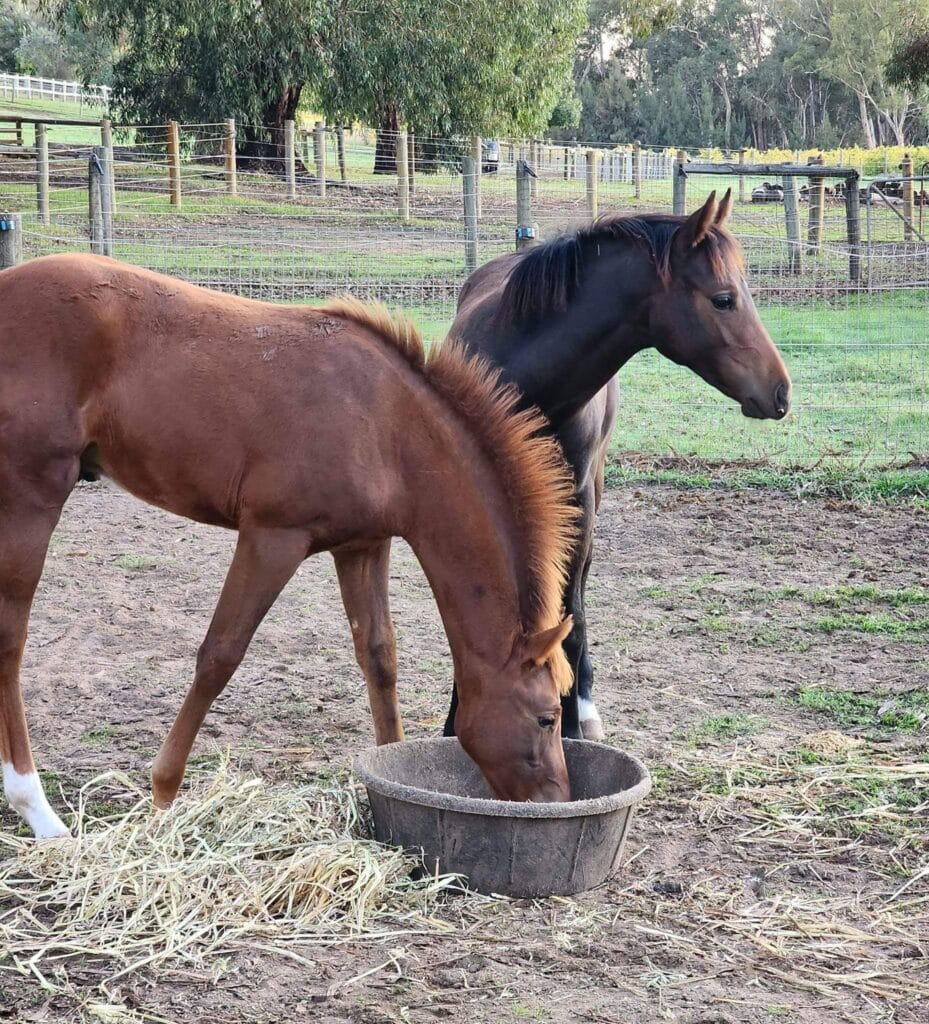
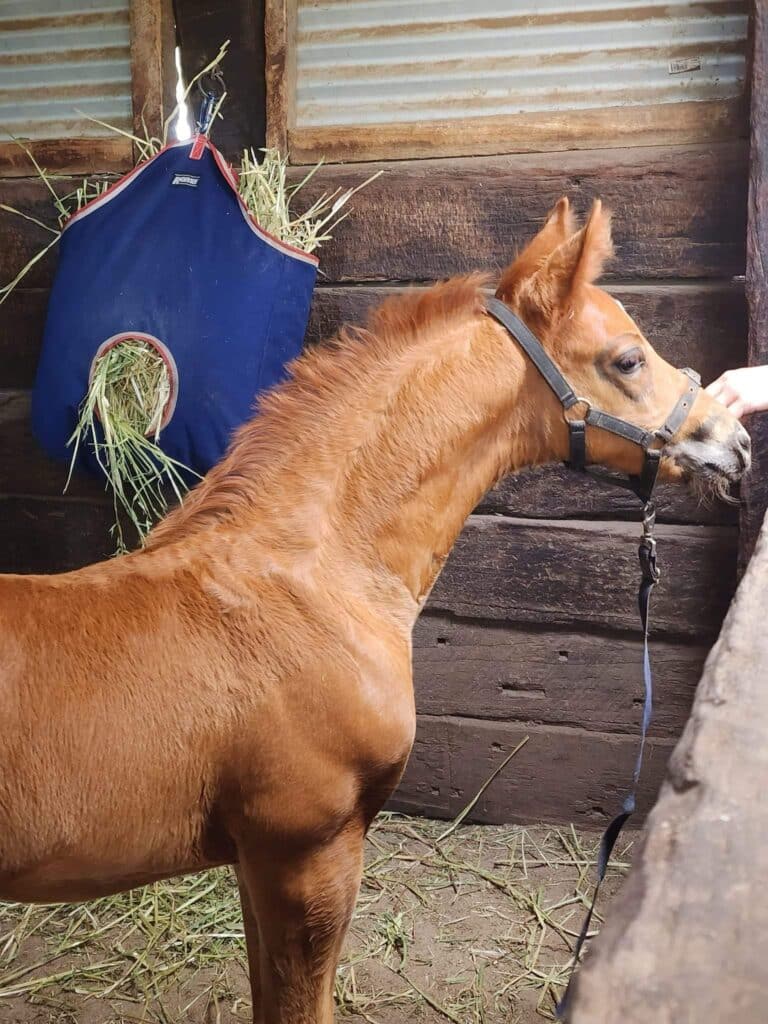
3. Buddying mares and foals up
In the past, if we have only had one foal to wean, it has been more challenging to do so on their own. If possible, we like to try and buddy a couple of foals up together, and mares up together.
Ideally, once weaned, we try and buddy our foals up with an old gelding or a pony, someone who won’t become super reliant on the foal (to avoid then creating another attachment!). An older gelding is a good idea if available so they can show the foals what is expected as an independent horse, to not have to follow their mums around, to know the routine of the day, and to follow along with that, wait for dinner, be sensible etc.
If you buddy up with a horse with bad habits, the foals can easily learn these. But having an old hand, if they are available is a great idea to pop in with your foals when they are weaned. If we have a number of foals to wean, we like to put them in together once weaned and settled. They love to play, and are still little after all. We don’t want to take that play aspect away from them. It shouldn’t be about being mature once weaned!
4. Keep their feed the same
We like to keep both our foals and mares on the same feed that they are used to for quite some time after weaning.
We feed T&R Horse Grower Weaner Pellets during the last trimester of pregnancy and continue whilst the foals are on their mums. This is the first processed feed that foals are exposed to, so we keep them on the same feed when they are weaned throughout their young stock years. It is a complete feed, providing them with pre and probiotics, lysine (an essential amino acid) and vitamins and minerals, which all support growth in young horses. It is one major thing to keep constant after such a huge change in their life when they are weaned.
Once the foals are weaned, we slowly move the mares diet over to T&R Claytons Pellets.
5. Watch your mares too
Last but not least, yes we focus a lot about our foals and keeping them sensible in their new environments post weaning, however we also keep a very close eye on our mares.
The mares have been feeding their babies for up to six months (we tend to wean about five months old), and once they stop feeding there is increased risk of mastitis. Depending on how much milk the mares still have, we occasionally give them a couple of days on anti-inflammatories so that their milk can reduce without them becoming engorged.
The mares can also become stressed when they lose their babies so buddying them up with a friend is also ideal, so they are not on their own. Ultimately you want happy and healthy mums and bubs post weaning!
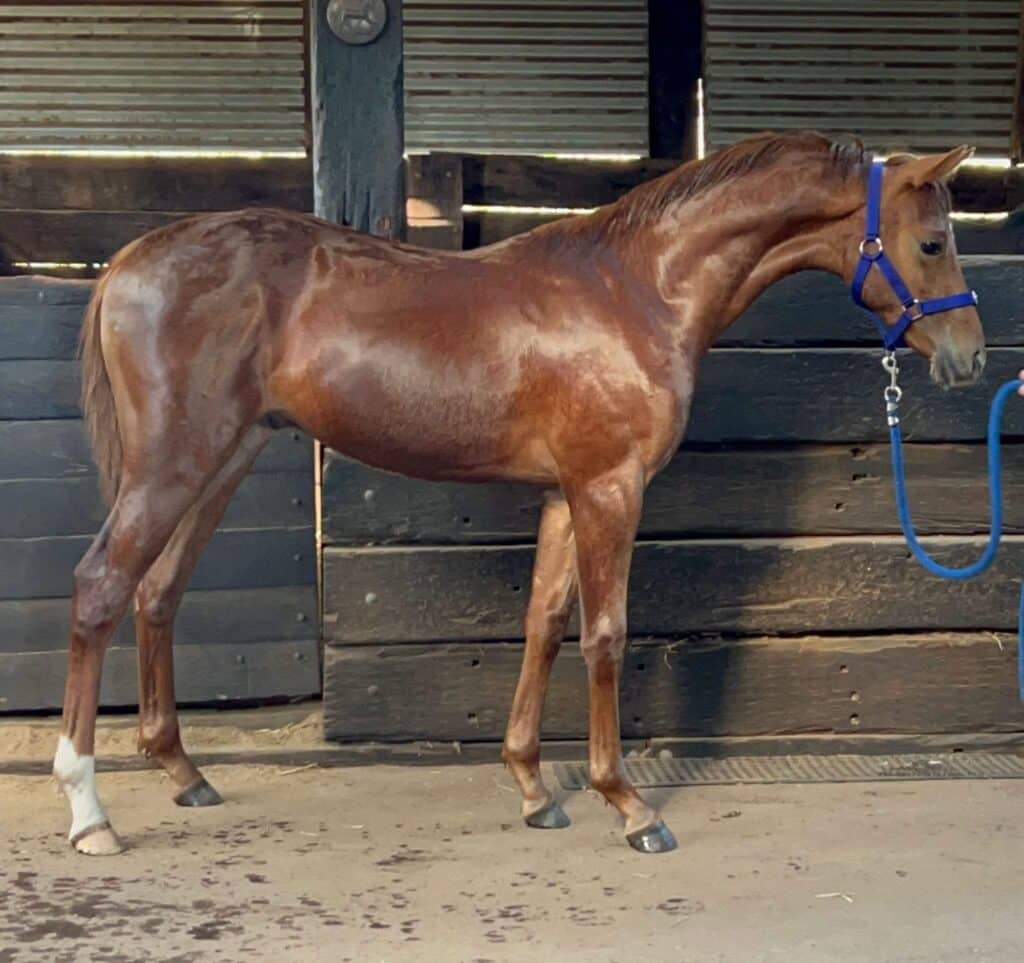
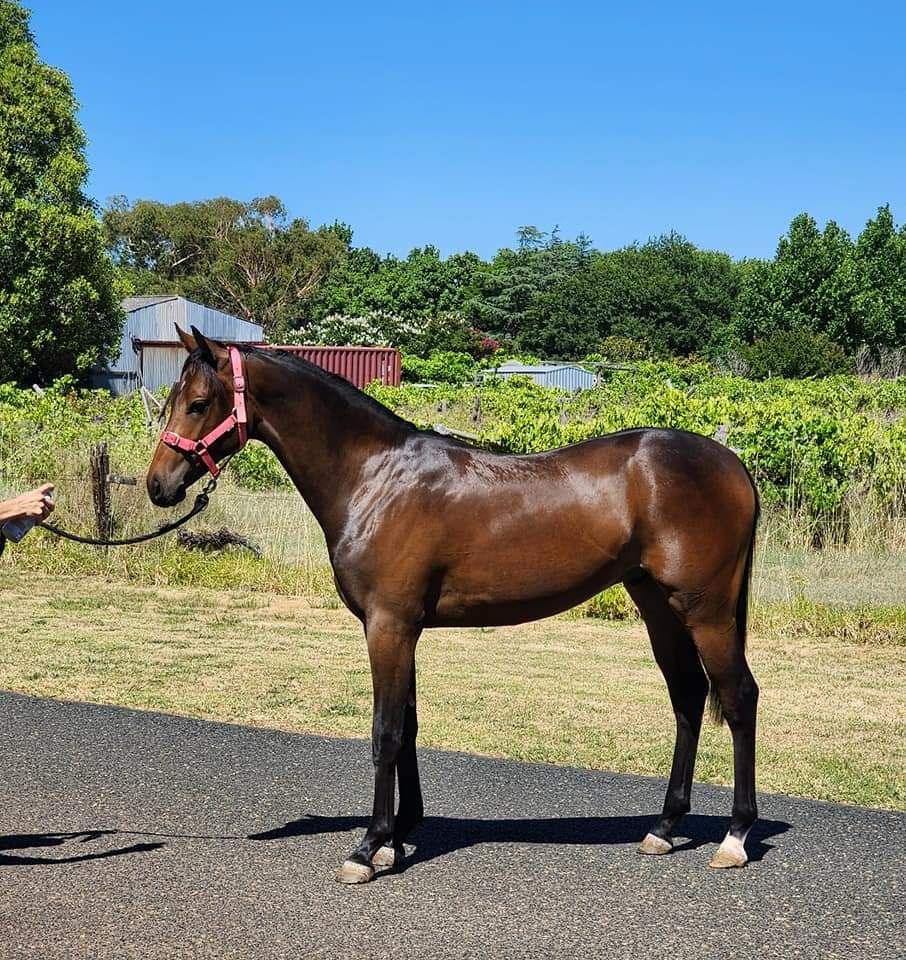



No Comments